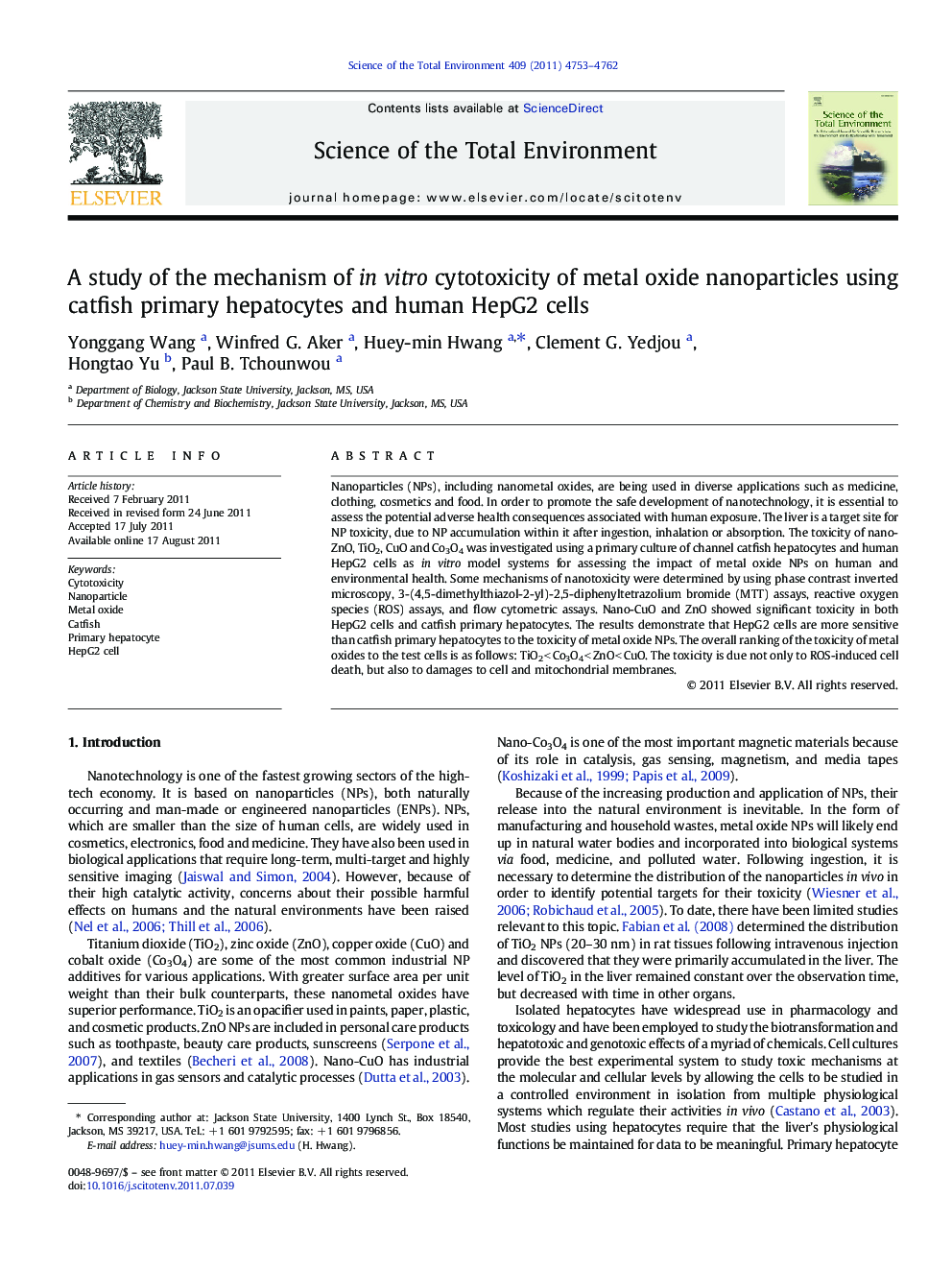| Article ID | Journal | Published Year | Pages | File Type |
|---|---|---|---|---|
| 4429964 | Science of The Total Environment | 2011 | 10 Pages |
Nanoparticles (NPs), including nanometal oxides, are being used in diverse applications such as medicine, clothing, cosmetics and food. In order to promote the safe development of nanotechnology, it is essential to assess the potential adverse health consequences associated with human exposure. The liver is a target site for NP toxicity, due to NP accumulation within it after ingestion, inhalation or absorption. The toxicity of nano-ZnO, TiO2, CuO and Co3O4 was investigated using a primary culture of channel catfish hepatocytes and human HepG2 cells as in vitro model systems for assessing the impact of metal oxide NPs on human and environmental health. Some mechanisms of nanotoxicity were determined by using phase contrast inverted microscopy, 3-(4,5-dimethylthiazol-2-yl)-2,5-diphenyltetrazolium bromide (MTT) assays, reactive oxygen species (ROS) assays, and flow cytometric assays. Nano-CuO and ZnO showed significant toxicity in both HepG2 cells and catfish primary hepatocytes. The results demonstrate that HepG2 cells are more sensitive than catfish primary hepatocytes to the toxicity of metal oxide NPs. The overall ranking of the toxicity of metal oxides to the test cells is as follows: TiO2 < Co3O4 < ZnO < CuO. The toxicity is due not only to ROS-induced cell death, but also to damages to cell and mitochondrial membranes.
► We conducted a nanotoxicity study by using catfish primary hepatocytes and human HepG2 cells. ► It was studied by using phase contrast inverted microscopy and MTT/ROS/flow cytometric assays. ► HepG2 cells are more sensitive to the toxicity of metal oxide NPs. ► The overall ranking of the toxicity of metal oxides is as follows: TiO2 < Co3O4 < ZnO < CuO. ► The toxicity is caused by ROS-induced cell death and damages to cell and mitochondrial membranes.
